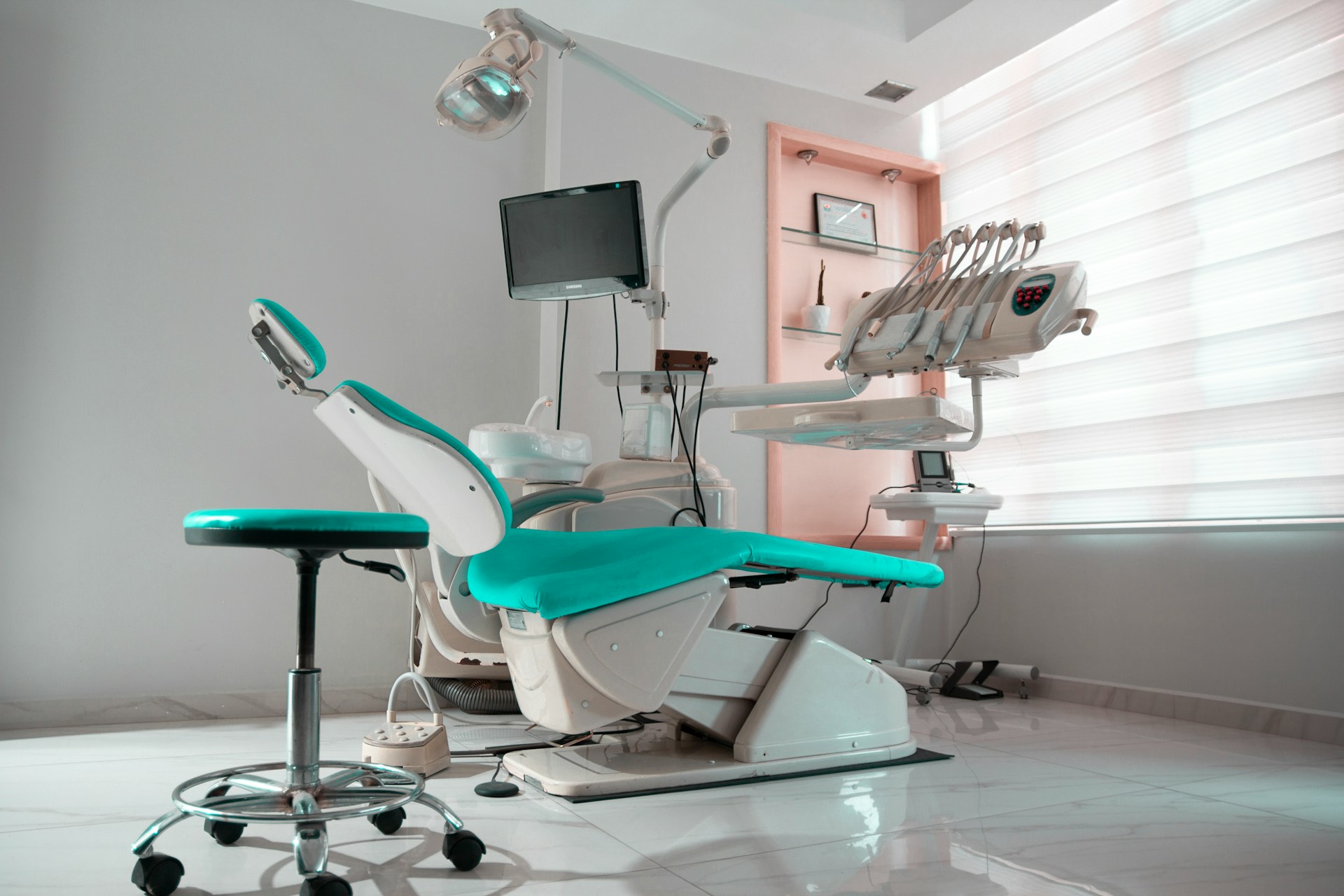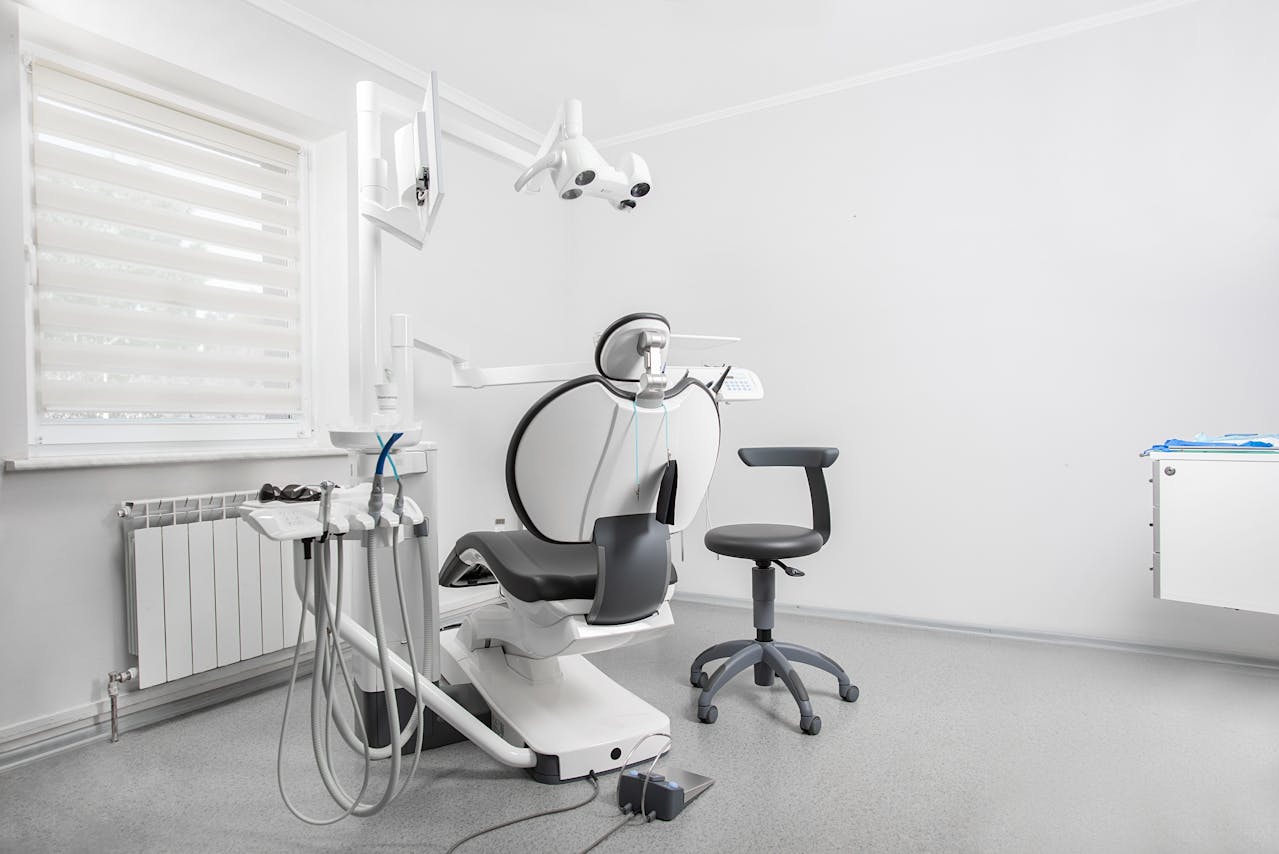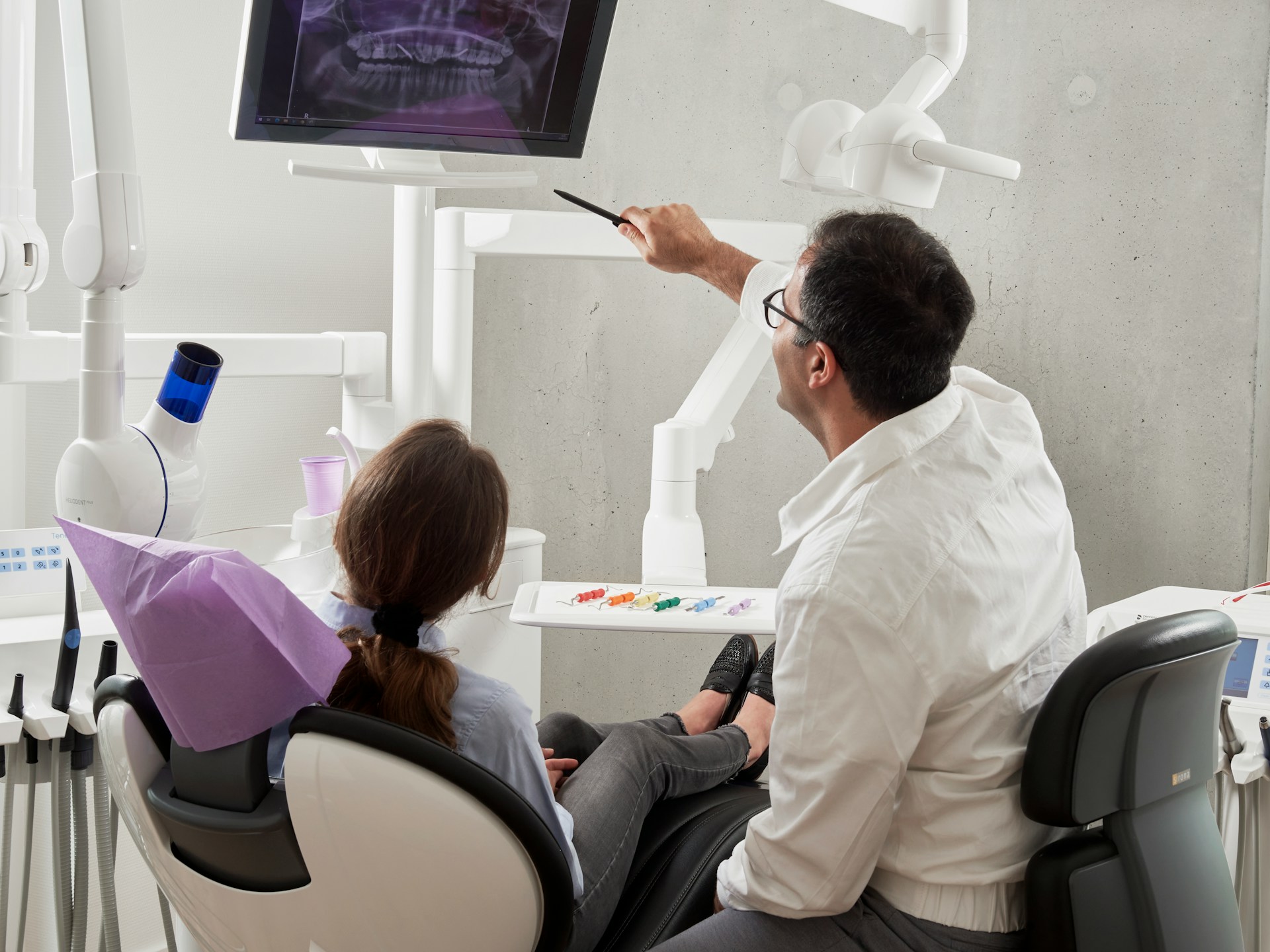List of DSOs in Minnesota - 2025

Minnesota's dental landscape presents unique operational challenges for Dental Service Organizations (DSOs), with most of the state's 4,069 licensed dentists concentrated in the Twin Cities metro area, leaving rural communities underserved. For multi-location DSOs spanning both metropolitan and rural Minnesota, efficient patient routing becomes critical to maintaining revenue and patient satisfaction.
This is where Arini's AI receptionist platform proves essential—automatically directing every caller to the nearest available location with real-time availability, ensuring no opportunity is lost to voicemail or manual transfers.
Key Takeaways
- Minnesota has 4,069 licensed dentists, with most of them concentrated in the Twin Cities metro area
- Park Dental Partners leads as Minnesota's largest locally-based DSO with 205 doctors across 93 practices
- Multi-location dental groups handle 500-1,200 calls daily, but miss around 30-35% of incoming calls
- Only a few Minnesota dentists specialize in pediatric care, and 5% in orthodontics
- 67% of new patients hang up when reaching voicemail, representing significant lost revenue
- Arini.ai's intelligent routing directs callers to the nearest available location automatically
1. Park Dental Partners - Minnesota's Largest Local DSO
Park Dental Partners stands as Minnesota's most significant locally-based dental service organization, having grown over 50 years to support 205 doctors across 93 dental practices throughout the Twin Cities, greater Minnesota, and western Wisconsin.
Multi-Brand Strategy:
- Park Dental - General and family dentistry
- Apollo Dental - Comprehensive dental care
- The Dental Specialists - Orthodontics, pediatric dentistry, and specialty services
- Central Minnesota Endodontics - Root canal therapy and endodontic care
Geographic Coverage
Park Dental's extensive network spans from urban Twin Cities locations to rural communities across greater Minnesota, creating complex patient routing challenges that require sophisticated call management systems.
Operational Scale
With such a large multi-location operation, Park Dental Partners likely handles hundreds of daily calls across their network. Without automated routing, they would face the industry-standard 30-35% missed call rate that costs practices $100,000-$150,000 annually in lost revenue.
2. Midwest Dental - Bridging Metro and Rural Minnesota
Midwest Dental operates 20+ locations across Minnesota, strategically positioned to serve both metropolitan and rural populations. Their presence extends from Apple Valley and Eagan in the metro area to smaller communities like Wells, Melrose, and Hinckley.
Service Model:
- Comprehensive general dentistry for all ages
- Family-focused care with flexible scheduling
- Consistent care standards across all locations
- Multi-location patient record access
Rural Access Strategy
MDH reports persistent geographic disparities in dentist distribution, with metro areas hosting a disproportionate share. However, this geographic spread creates significant call routing complexity—patients from rural areas need immediate direction to the nearest available office without navigating a complex phone tree.
Technology Needs
With 23 locations managing potentially 500+ daily calls across their Minnesota network, Midwest Dental requires intelligent call routing that can instantly direct rural callers to the closest office with availability, rather than requiring manual staff intervention that leads to 87% patient drop-off when voicemail is reached.
3. Heartland Dental - National DSO with Minnesota Presence
Heartland Dental, one of the nation's largest DSOs with over 1,700 offices across 39 states, maintains multiple locations in Minnesota as part of its extensive network.
Operational Scale:
- Supports more than 10,000 dentists nationwide
- Provides comprehensive back-office support services
- Offers both general dentistry and specialty care
- Leverages economies of scale for equipment and supplies
Minnesota Integration
While specific Minnesota location counts aren't detailed in available research, Heartland's national presence suggests multiple offices across the state. Their size and multi-location complexity make them prime candidates for automated call routing technology that prevents the typical 30-35% missed call rate plaguing dental practices.
Specialty Coordination
Given that only 5% of Minnesota dentists specialize in orthodontics and 3% in pediatric dentistry, Heartland must efficiently coordinate specialty referrals between locations. An intelligent routing system ensures patients needing specialized care are directed to appropriate offices without manual staff intervention.
4. MB2 Dental - Growing National Presence in Minnesota
MB2 Dental, a Dallas-based DSO, has been actively acquiring Minnesota dental practices, including Potach & Mitchell Dental Clinic in Austin, MN, in May 2024. This represents part of their aggressive 2024 expansion, which included 59 new practices across six states.
Growth Strategy:
- Strategic acquisition of established Minnesota practices
- Preservation of existing practice branding and patient relationships
- Integration into centralized support infrastructure
- Expansion into both metro and rural markets
Operational Challenges
As MB2 Dental rapidly expands its Minnesota footprint, it faces increasing complexity in managing patient calls across newly acquired locations. With each practice potentially handling 150-200 weekly calls, the combined network requires automated systems to prevent the industry-standard 87% patient abandonment rate when callers reach voicemail.
Technology Integration
Newly acquired practices need seamless integration into MB2's call management infrastructure. Arini's Integration & Workflow Customization Module enables one-click connections to major practice management systems like OpenDental, Dentrix, EagleSoft, and Denticon, ensuring a consistent patient experience across all locations.
5. University of Minnesota Dental Clinics - Academic DSO Model
The University of Minnesota School of Dentistry operates teaching clinics that function as a unique DSO model, providing affordable care while training future dentists.
Service Model:
- Faculty-supervised student care at reduced rates
- Comprehensive dental services, including specialty care
- Focus on underserved and Medicaid populations
- Research-driven treatment protocols
Geographic Impact
Recent Minnesota workforce analyses flag regional disparities and potential pipeline constraints, with dentist supply varying 5.5–10 per 10,000 by region. These academic centers provide critical access points, particularly for low-income patients who might otherwise go without care.
Call Management Needs
University dental clinics experience high call volumes from patients seeking affordable care, but their academic schedule creates unique availability patterns. Automated systems that understand complex scheduling constraints and can route calls to appropriate departments (general dentistry, orthodontics, pediatric care) are essential for maintaining patient access.
6. Safety-Net Providers - FQHCs and Community Health Centers
Minnesota's safety-net providers include federally qualified health centers (FQHCs) and community health clinics that serve uninsured and underinsured populations with sliding fee scales.
Key Organizations:
- People's Center Clinics & Services (Minneapolis)
- Community-University Health Care Center (Minneapolis)
- Open Cities Health Center (St. Paul)
- Various rural community health centers
Service Focus:
- Emergency dental services for underserved populations
- Medicaid and uninsured patient care
- Sliding fee scale based on income
- Integrated medical and dental services
Operational Challenges
Safety-net providers face exceptionally high call volumes from patients with limited access to care options. With 63% of Minnesota dentists concentrated in the metro area, rural patients often must travel significant distances to reach these limited safety-net locations. Efficient call routing ensures patients are directed to the nearest available safety-net provider rather than bouncing between locations.
Geographic Distribution: Metro vs. Rural Minnesota
Minnesota's dental care landscape reveals a stark geographic divide that directly impacts DSO operations and patient access.
Metro Concentration:
- Most of Minnesota's 4,069 licensed dentists practice in the 7-County Twin Cities Metro Area
- High competition among DSOs for metro patients
- Greater insurance acceptance (96% of metro dentists participate in Delta Dental networks)
Rural Access Challenges:
- Only 37% of dentists serve the remaining 63% of Minnesota's geography
- Central Minnesota: 9% of state dentists
- Southeast Minnesota: 9% of state dentists
- Northwest Minnesota: 8% of state dentists
- Northeast Minnesota: 6% of state dentists
- Southwest Minnesota: 5% of state dentists
Operational Impact
This geographic disparity creates significant routing complexity for DSOs operating across both markets. A patient calling from rural Melrose needs immediate direction to the nearest available office, not a confusing phone tree that results in the typical 87% hang-up rate when voicemail is reached.
Arini's AI receptionist platform solves this challenge by automatically detecting caller location and routing to the nearest office with real-time availability, ensuring rural patients aren't lost due to inefficient call handling.
Specialty Distribution Across Minnesota DSOs
Minnesota's limited specialty provider numbers create additional routing complexity for multi-location DSOs.
Specialty Breakdown:
- 80% of Minnesota dentists practice general dentistry
- 5% specialize in orthodontics
- 4% specialize in oral and maxillofacial surgery
- 3% specialize in pediatric dentistry
DSO Specialty Strategies:
- Multi-specialty integration: Organizations like Park Dental Partners operate dedicated specialty brands (The Dental Specialists) alongside general dentistry practices
- Referral networks: DSOs without in-house specialists must coordinate referrals to partner providers
- Geographic concentration: Specialty services are typically concentrated in metro areas, requiring rural patients to travel for care
Routing Complexity
When a rural parent calls seeking pediatric dental care (only 3% of state dentists), they need immediate direction to the nearest pediatric specialist—not general information that requires additional research. Similarly, orthodontic inquiries (5% of dentists) require precise routing to appropriate locations.
Arini's customizable call flows can be programmed to identify specialty requests and automatically route to appropriate locations, eliminating the need for patients to navigate complex DSO networks manually.
The Critical Need for Intelligent Call Routing in Minnesota DSOs
Minnesota's unique geographic and demographic challenges make intelligent call routing essential for DSO success.
Call Volume Reality:
- Multi-location dental groups handle 500-1,200 calls daily across all sites
- Practices miss 30-35% of incoming calls during regular business hours
- 87% of new patients who reach voicemail hang up and never call back
- 43% of dental appointments are booked between 5 PM and 9 AM, when most practices are closed
Revenue Impact
Each missed new patient call represents approximately $4,500 in lost lifetime value. For a multi-location DSO missing 30-35% of calls, this translates to hundreds of thousands in annual lost revenue.
Rural Patient Challenges
Patients in rural Minnesota often have limited calling opportunities during work hours and may be calling from mobile phones with limited minutes. Requiring them to navigate complex phone systems or call multiple locations creates significant barriers to care access.
Arini.ai's solution addresses these challenges by:
- Answering 100% of inbound calls 24/7
- Automatically routing callers to the nearest available location based on ZIP code
- Booking appointments directly into practice management systems
- Providing after-hours scheduling for 43% of online appointments booked outside business hours
- Reducing staff burden by handling routine calls and FAQs
How Arini.ai Automates Patient Routing Across Minnesota DSOs
Arini's multi-location routing capabilities are specifically designed for DSOs operating across Minnesota's dispersed geography.
Technical Implementation:
- Location-based routing: Automatically detects the caller's ZIP code and calculates drive time to the nearest offices
- Real-time availability: Syncs with practice management systems to show only offices with actual openings
- Specialty detection: Identifies pediatric, orthodontic, or other specialty requests and routes accordingly
- Load balancing: Distributes calls across locations to prevent any single office from being overwhelmed
Integration Requirements:
- One-click PMS integration with OpenDental, Dentrix, EagleSoft, and Denticon
- HIPAA-compliant patient data handling across all interactions
- Customizable call flows per location, specialty, and provider type
- Real-time notifications to staff for every booked appointment
Operational Benefits:
- Eliminates the 30-35% missed call rate typical of manual systems
- Prevents the 87% patient abandonment when voicemail is reached
- Captures 43% of appointments booked outside business hours
- Reduces front-desk workload by 20-30% while improving service levels
- Increases chair utilization from 70-75% to 85-90%
DSO Case Study: Revenue Impact of Intelligent Call Routing
Unified Dental Care's experience demonstrates the financial impact of implementing Arini's intelligent routing across multi-location operations:
- $100,000+ monthly revenue uplift across their DSO network
- 24% profit increase through improved operational efficiency
- 80% reduction in missed calls through 24/7 AI answering
- Significant staff efficiency gains, allowing focus on patient care rather than phone management
Minnesota Application
For Minnesota DSOs facing the metro-rural divide and specialty provider shortages, these results are particularly relevant. A DSO operating across both Twin Cities and rural Minnesota could see similar improvements by ensuring every caller—whether from Minneapolis or Melrose—is immediately connected to the nearest available location.
Arini's Analytics & Notifications Module provides real-time tracking of these metrics across all locations, showing exactly how many calls are answered, appointments booked, and revenue generated from each office and geographic area.
Choosing the Right Minnesota DSO: Patient and Provider Considerations
For Patients:
- Insurance acceptance: Verify which insurance plans each DSO location accepts
- Specialty availability: Confirm which locations offer pediatric, orthodontic, or other needed services
- Geographic convenience: Consider travel distance, especially for rural patients
- Technology adoption: Look for DSOs with 24/7 scheduling and automated systems
- Provider credentials: Research dentist qualifications and experience
For Dental Professionals:
- Practice autonomy: Understand how much clinical independence is maintained
- Corporate culture: Evaluate alignment with personal practice philosophy
- Technology infrastructure: Assess call management and patient routing capabilities
- Growth opportunities: Consider multi-location advancement potential
- Support services: Review the scope of back-office and administrative support
Technology as Differentiator
DSOs equipped with intelligent call routing and 24/7 scheduling capabilities can provide superior patient experiences while maintaining operational efficiency—critical advantages in Minnesota's competitive dental market.
Future Outlook: DSO Growth and Technology Adoption in Minnesota
Minnesota's dental landscape faces significant changes that will impact DSO operations and technology requirements.
Workforce Challenges:
- Projected 22-30% dentist retirement rate over the next decade
- Declining dental school enrollment (92 vs. historical 150 students)
- Increasing rural access challenges as metro concentration continues
DSO Consolidation Trends:
- Continued acquisition activity by national players like MB2 Dental and Heartland Dental
- Growth of regional leaders like Park Dental Partners
- Increasing multi-specialty integration across DSO networks
Technology Imperatives:
- 24/7 call answering to capture 43% of appointments booked outside business hours
- Intelligent routing to maximize the efficiency of limited specialty providers
- Automated scheduling to reduce administrative burden on existing staff
- Real-time analytics to optimize location performance and resource allocation
Arini's scalable platform is positioned to support this evolution, providing the infrastructure DSOs need to manage growing networks across Minnesota's challenging geographic landscape while maintaining consistent patient experiences and maximizing revenue capture.
Frequently Asked Questions
Q: What is a DSO, and how does it differ from a traditional dental practice?
A: A Dental Service Organization (DSO) provides centralized administrative, operational, and business support to multiple dental practices while dentists maintain clinical autonomy. Unlike traditional solo practices that handle all business functions independently, DSOs leverage economies of scale for marketing, billing, HR, and technology, allowing dentists to focus primarily on patient care.
Q: Which DSOs in Minnesota specialize in pediatric dentistry?
A: Park Dental Partners operates The Dental Specialists brand, which includes pediatric dentistry services. Given that only a low percentage of Minnesota dentists specialize in pediatric care, most DSOs either partner with specialty providers or operate dedicated pediatric locations primarily in metro areas where specialist concentration is higher.
Q: Are there free dental clinics in Minneapolis for uninsured patients?
A: Yes, Minneapolis has several safety-net providers, including People's Center Clinics & Services and Community-University Health Care Center, that offer sliding fee scale services for uninsured patients. These federally qualified health centers (FQHCs) provide essential access for underserved populations who might otherwise go without dental care.
Q: How does Arini.ai help DSOs route callers to the nearest available location?
A: Arini.ai uses caller ZIP code detection combined with real-time availability data from integrated practice management systems to automatically route callers to the nearest location with appointment openings. This eliminates manual transfers and voicemail, ensuring 100% of calls are answered 24/7 and patients are connected to appropriate care immediately.
Q: What are the benefits of choosing a DSO for orthodontic treatment in Minnesota?
A: DSOs offering orthodontic services benefit from integrated care models where general dentists and orthodontists coordinate treatment within the same network. Given that only a few Minnesota dentists specialize in orthodontics, DSOs can provide more efficient referral processes and consistent record sharing between general and specialty providers, improving treatment outcomes and patient convenience.
Read more

List of DSOs in South Dakota - 2025
Marketing

List of DSOs in North Dakota - 2025
Marketing

List of DSOs in Wisconsin - 2025
Marketing






